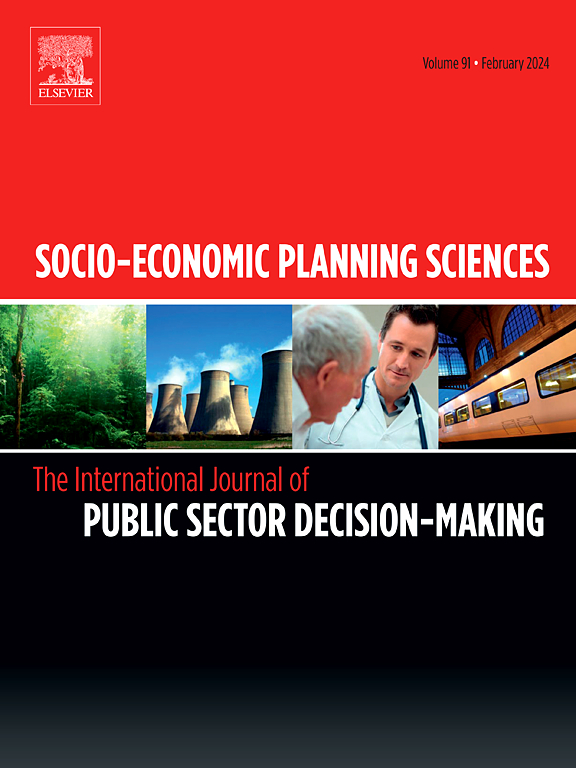Quantifying political effects in the spatial allocation of public services
IF 5.4
2区 经济学
Q1 ECONOMICS
引用次数: 0
Abstract
The spatial allocation of citizen-accessed public services is typically influenced by factors related to citizen demand, but also by other factors, including political considerations. We develop a method to quantify how political factors influence citizens’ spatial access to services. The method is illustrated through the study of two different public services in the state of São Paulo, Brazil; Citizen Service Centers and outpatient medical clinics. Each of the two programs, which are analyzed separately, consists of a number of units for in-person service delivery, spread across the state. We first build a regression model to analyze the allocation of each service, using citizen demand, official program criteria, and related variables as explanatory factors. The degree of explanation of the models improves once political variables are included. For each service, the geographical location of some of the implemented service units are explained by the political variables. Operations Research methods are then used to find an alternative, optimal, spatial allocation for the units discerned as political in the regression analysis. We quantify how much average citizen travel distance would have decreased, had this counterfactual allocation been implemented. Travel distance is one measure of welfare in spatial allocation problems and on average distances are thus longer in the presence of politically induced allocations. Longer distances can, in turn, have other first order welfare effects, for instance on health outcomes. Understanding political effects is thus important. Related to these considerations, we offer policy conclusions and discuss the generalizability of the study.
量化公共服务空间分配中的政治效应
公民可获得的公共服务的空间分配通常受到与公民需求有关的因素的影响,但也受到包括政治考虑在内的其他因素的影响。我们开发了一种方法来量化政治因素如何影响公民对服务的空间获取。通过对巴西圣保罗州两种不同公共服务的研究说明了这种方法;市民服务中心和门诊诊所。这两个项目中的每一个都是单独分析的,由许多单位组成,在全州范围内提供面对面的服务。我们首先建立一个回归模型来分析每项服务的分配,使用公民需求、官方计划标准和相关变量作为解释因素。一旦纳入政治变量,模型的解释程度就会提高。对于每个服务,一些实现的服务单元的地理位置由政治变量解释。然后使用运筹学方法为回归分析中识别为政治的单位找到替代的,最佳的空间分配。我们量化了如果实施这种反事实分配,公民的平均出行距离会减少多少。在空间分配问题中,旅行距离是衡量福利的一个指标,因此,在存在政治诱导分配的情况下,平均距离更长。更长的距离反过来又会产生其他一级福利效应,例如对健康结果的影响。因此,理解政治影响非常重要。根据这些考虑,我们提出了政策结论,并讨论了研究的普遍性。
本文章由计算机程序翻译,如有差异,请以英文原文为准。
求助全文
约1分钟内获得全文
求助全文
来源期刊

Socio-economic Planning Sciences
OPERATIONS RESEARCH & MANAGEMENT SCIENCE-
CiteScore
9.40
自引率
13.10%
发文量
294
审稿时长
58 days
期刊介绍:
Studies directed toward the more effective utilization of existing resources, e.g. mathematical programming models of health care delivery systems with relevance to more effective program design; systems analysis of fire outbreaks and its relevance to the location of fire stations; statistical analysis of the efficiency of a developing country economy or industry.
Studies relating to the interaction of various segments of society and technology, e.g. the effects of government health policies on the utilization and design of hospital facilities; the relationship between housing density and the demands on public transportation or other service facilities: patterns and implications of urban development and air or water pollution.
Studies devoted to the anticipations of and response to future needs for social, health and other human services, e.g. the relationship between industrial growth and the development of educational resources in affected areas; investigation of future demands for material and child health resources in a developing country; design of effective recycling in an urban setting.
 求助内容:
求助内容: 应助结果提醒方式:
应助结果提醒方式:


